
EcoWatch
Restoring Florida Everglades Depends Upon Fixing State’s Freshwater Flow, Conservationists Say
- Feb 9, 2024, 10:34 AM
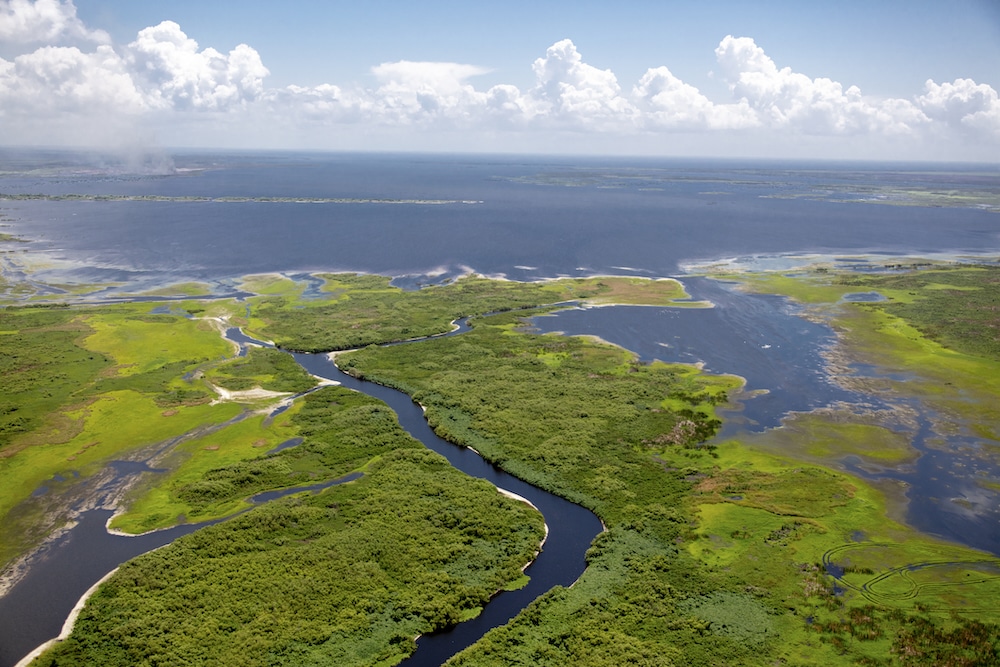
We’ve made a mess, and now it’s time to fix it.
These are the unspoken mandates of Everglades conservation organizations working to restore healthy freshwater flow through the Sunshine State.
Water is life for planet and people. Therefore, when its flow is interrupted or cut off, there are dire consequences.
History of Water Flow

In Florida, freshwater from Lake Okeechobee in the middle of the state naturally flowed south through the Everglades and into Florida Bay and the present-day Florida Keys. In doing so, it nourished entire ecosystems.
According to the South Florida Water Management District (SFWMD), farms and communities developed around the lake in the late 1800s and early 1900s. Catastrophic hurricanes in 1926 and 1928 caused millions in damage and deaths by flooding, prompting the government to step in to control the water.
The Army Corps of Engineers built a series of canals to severely restrict how much water flows through the state. Instead of coming south through the Everglades, most is now discharged east and west, through concrete sloughs dredged for this specific purpose.
The result has been catastrophic for this ecosystem that evolved around the flow of water. One of the most invisible harms is hypersalinity.
Hypersalinity Is Getting Worse
“In general, hypersalinity refers to the salinity in a coastal water body,” explained Steve Davis, the chief science officer at The Everglades Foundation. “Ocean salinity is roughly 35 parts per thousand (ppt). If you’ve ever swam in the ocean and tasted it, you know what that is. When salt content gets higher than that of the ocean, we call it hypersalinity.”
Florida Bay is a body of water that sits south of Everglades National Park, thereby receiving any freshwater flows through that ecosystem. It’s flanked by saltwater from the Gulf of Mexico and the Atlantic Ocean. As such, it’s naturally a brackish environment.
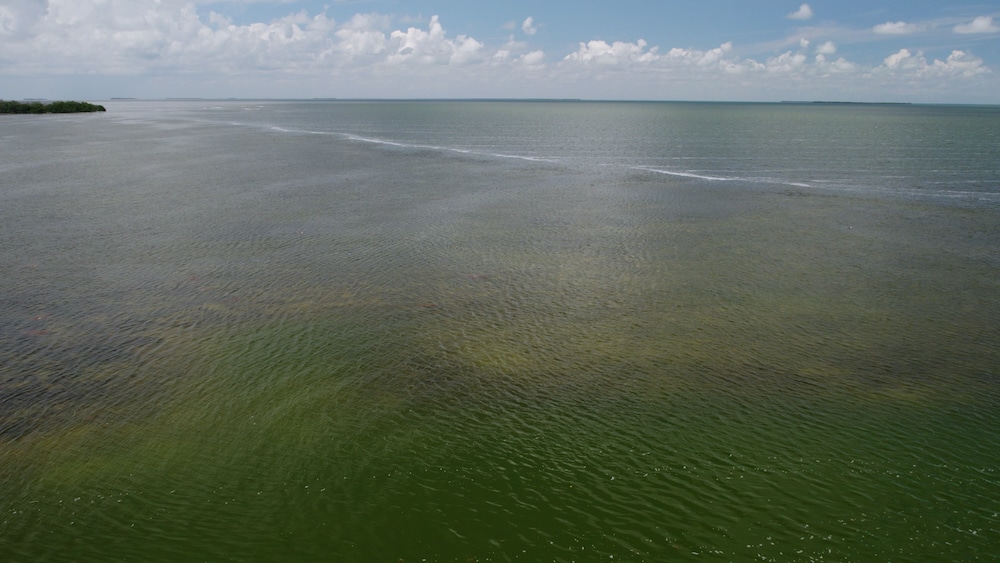
A Florida Bay drone shot in 2022 shows the difference between algae blooms and clear water. The Everglades Foundation
Unfortunately, because of the restricted water flows through the state, Florida Bay currently receives less than half of its historical freshwater flows. “It’s all driven by water balance, and we changed the plumbing,” Davis explained. “It’s a wetland. If you deprive a wetland of water, especially freshwater, it’s going to have implications on the habitat and the ecology of the system in general.”
Basically, because of our water controls at Lake Okeechobee, Florida Bay, an 849 square mile area is becoming hypersaline more often and more intensely than ever before. Freshwater, like the water in Lake Okeechobee, has a salinity of zero. Ocean water typically has a salinity index of 35 ppt and historically, a healthy brackish Florida Bay might have had an index of 40. Florida Bay’s waters get trapped and evaporate in the shallow estuary, leaving salt behind. This is how the salinity of the bay begins to increase. Additionally, since rainfall helps to bring the salinity down, drought years exacerbate the effects. And, without freshwater coming down through the Everglades, there’s nothing to flush the system.
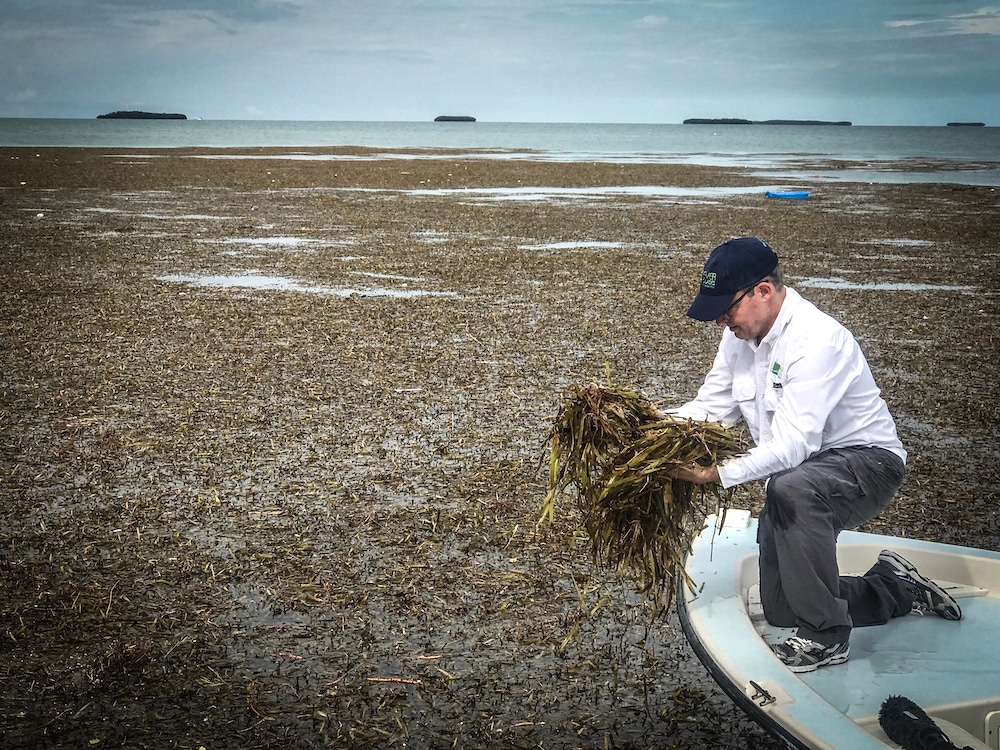
Steve Davis takes stock of the massive seagrass dieoff of 2017 following a hypersalinity event. The Everglades Foundation
Now, add in our disruptions to the natural flow of water from Lake Okeechobee, exacerbated by droughts and climate change. All this has caused Florida Bay’s salinity to reach up to 70 to 80 ppt – more than double that of the ocean, Davis lamented. In fact, we’re now at the point where average rainfall still results in salinity higher than the ocean, he said.
“This is devastating to the ecology and fisheries of Florida Bay,” Davis said. Effects he’s witnessed have been massive seagrass die offs and intense blooms of toxic algae. “It’s the downward spiral of the entire ecosystem. It goes from clear water to something that looks like pea soup.”
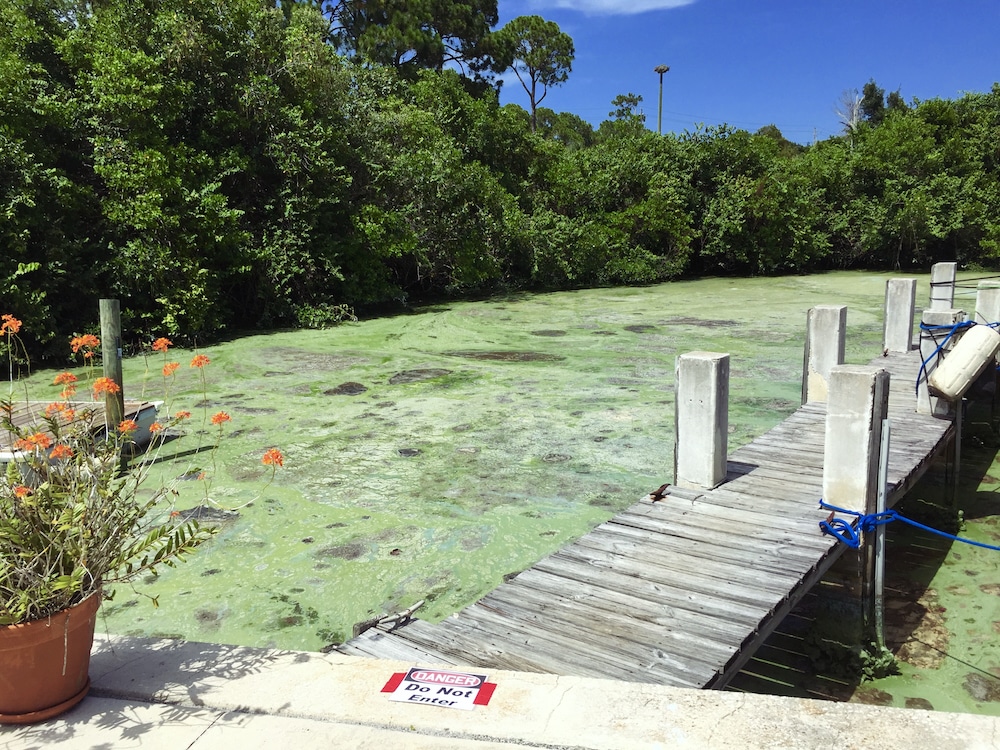
Green algae discharges from Lake Okeechobee show an ecosystem in decline. The Everglades Foundation
Heat Is a Double Whammy
That’s not all. Florida’s summers are notoriously, record-breakingly hot. In summer 2023, the heat disrupted the entire marine ecosystem and killed swaths of Florida’s already fragile coral reef.
“The combo of heat and hypersalinity is what is most devastating to the bay,” Davis said. “Hot, salty water doesn’t hold much oxygen, and oxygen is essential to the health of the bay and to large fish species that are highly coveted by anglers.”
Luckily, good rainfall and more freshwater flow through the current Everglades restoration of the Tamiami Trail prevented a hypersalinity event during the heatwave. But what happens during a drought?
Restoration and Combating Climate Change
“What Everglades restoration does is to push back against all that and keep those areas functioning as brackish areas, rather than hypersaline areas,” Davis explained.
The Everglades Foundation was formed to “replumb South Florida” and get water from Lake Okeechobee flowing south again, Davis said. A comprehensive Everglades restoration plan passed in the year 2000, and the Foundation’s role ever since has been to implement it. This involves constructing major infrastructure projects to free the flow.
The key project is an Everglades agricultural reservoir to be built south of Lake Okeechobee. “That’s the one that really does heavy lifting to get water south,” Davis said.
The above-ground reservoir full of freshwater would act as “drought insurance for the ecosystem” much like a rain barrel. During drier times, water could be used to water plants and agricultural lands and be sent south through the Everglades to Florida Bay.
By design, it will be a polluted reservoir because it’s taking in Lake Okeechobee’s “toxic slime” water and agricultural runoff from nearby sugar fields. Wetlands for treatment will surround the reservoir to help get that water clean before it’s used or sent south. These are engineered, highly managed wetlands, Davis explained. “If you stand in the middle of one, you’d think it was the Everglades. But it’s managed through soils, vegetation and how water flows through them to maximize the removal of pollutants – and especially phosphorus, which is our primary pollutant.”
As an important byproduct, the treatment wetlands will also sequester large amounts of phosphorus and carbon, helping to combat the climate crisis.
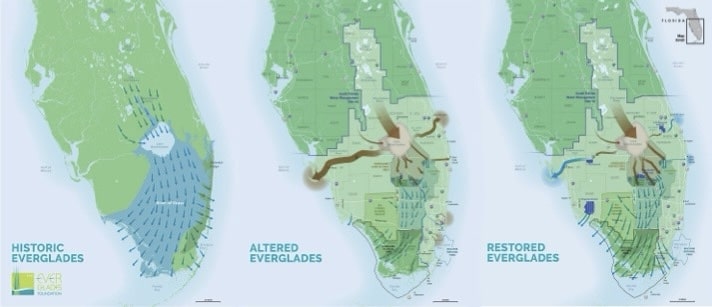
A comparison of historical, current and restored freshwater flow through Florida. The Everglades Foundation
Threats to Drinking Water
“It’s our water supply also,” Davis said. “We can’t forget that. Fundamentally, healthy Everglades are also responsible for providing our clean, daily freshwater supply.”
He’s talking about saltwater intrusion, a phenomenon already happening in South Florida. Sea level rise causes water to intrude deeper inland through the state’s limestone foundations. With no freshwater coming down the state to refresh underground aquifers, there’s no pressure asserted to keep these waters at bay. Saltwater is already penetrating into the Everglades and the Biscayne Aquifer, the state’s main drinking water supply.
Therefore, increasing freshwater flow would help to irrigate the entirety of South Florida, ensure that Florida Bay and nearshore habitats in the Florida Keys don’t become too saline, and protect the water supply. That’s a triple win.
Restoration Is a Good Investment
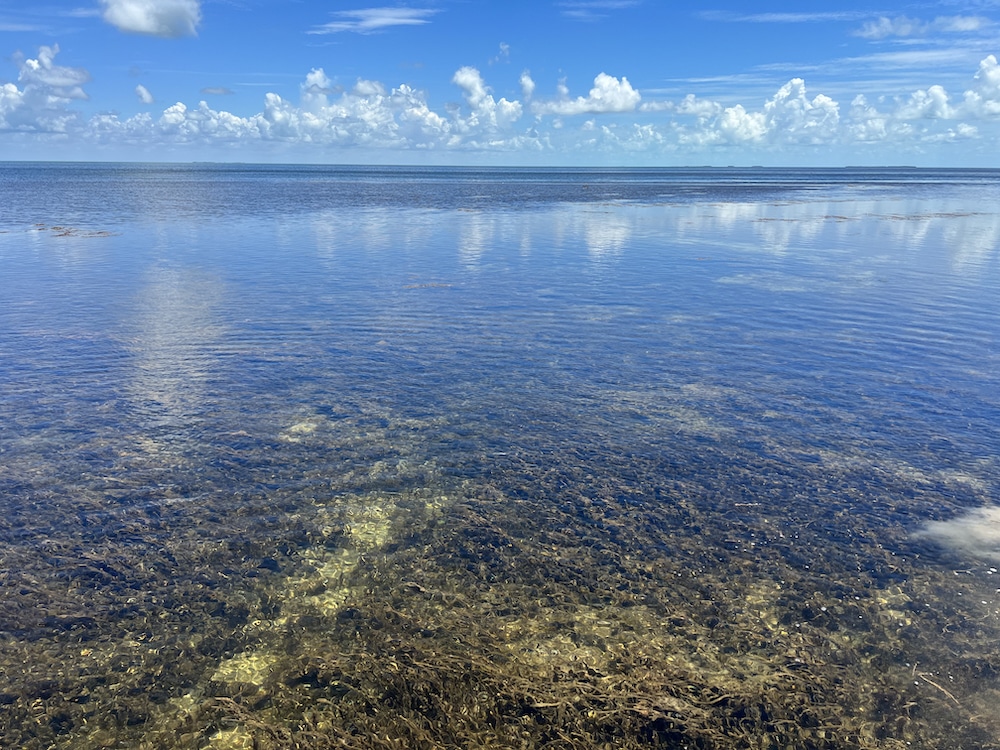
At Crocodile Point, healthy seagrass is visible through clear water in 2022. The Everglades Foundation
The Army Corps of Engineers broke ground on the reservoir project in 2023. It’s projected to be a multibillion-dollar project, but the economic benefits will measure well beyond that, experts believe. “We commissioned a study in 2010 that showed, conservatively, that Everglades Restoration delivers a 4-to-1 return on investment,” Davis said. “That’s enormous!”
Just how much money is that? About $20 billion worth, experts believe, if we follow today’s Everglades restoration plan.
Opposition and Stakes
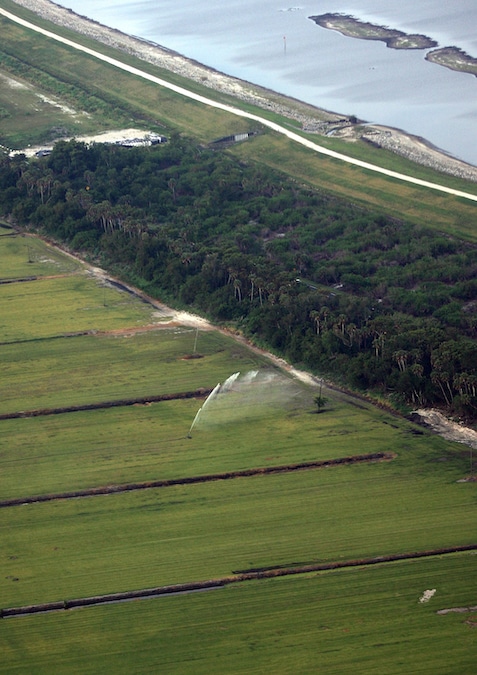
The main opponent of the reservoir is Big Sugar. Three industrial sugar giants filed a lawsuit to stop construction because “they think that water belongs to them,” Davis said. All their claims were denied, and they each appealed. The case remains before the Court of Appeals.
According to Kelly Cox, Audubon Florida’s director of Everglades policy, “If Sugar wins their appeal on this, they will hold hostage significant volumes of water that should be sent south to Florida Bay. They don’t even use all the water they are already allocated, and they’re asking for more!”
“Everglades restoration is one of our biggest opportunities to build resiliency in South Florida,” Cox said. “With increasing climate threats to our communities, economy, health, and environment, restoration helps us sequester carbon, safeguards drinking water supplies, reduces storm impacts, and supports industries that rely on a healthy and thriving River of Grass.”
